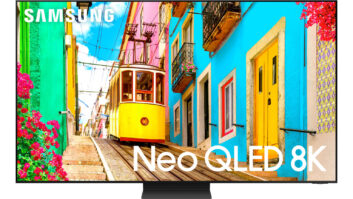Washington – The House Energy and Commerce Committee will meet Thursday to review a discussion draft of new digital television policy, which among other things would impose an analog television cutoff date of Dec. 31, 2008 and accelerate the DTV tuner mandate to July 1, 2006.
The draft of the “Digital Television Transition Act of 2005” was credited to Commerce Committee Chairman Joseph Barton (R-Texas) and Telecommunications and Internet Subcommittee chairman Fred Upton (R-Mich.).
The draft offers a later analog cutoff date than the Dec. 31, 2006 date Barton had originally said he would support, but it does away with the 85 percent DTV penetration rate provision which has prevented the establishment of a hard cutoff date thus far.
“We’ve held four hearings since last year on the digital television transition and dedicated the past two months to seeking a bipartisan consensus,” Barton said in a prepared statement. “It’s now time to take the next step and legislate. The current 85 percent penetration test guarantees only confusion and uncertainty. It is far wiser to plan for the coming change than to sit back and wait for television sets to go dark. That is the common sense principle upon which this discussion draft is predicated.”
Reportedly some House Democrats were threatening to vote against the measure as written because it omits a plan to subsidize low-income residents who will require a digital TV tuner/converter to continue to receive free over-the-air broadcasts after analog TV signals go dark. However, a number of Republicans were said to be moving to include a provision to assist those who would be hit hardest by the measure.
“For nearly two months we have negotiated in absolute good faith with our Democrat counterparts and our hearing this week on the draft bill ensures that the process continues to move forward,” Upton said. “We will continue to work on a bipartisan bill that I hope will enjoy widespread support on both sides of the aisle.”
Other items addressed in the discussion draft include the following:
- A requirement that the FCC issue a report and order by Dec. 31, 2006 on the final digital channel assignments for broadcasters, complete any reconsideration by July 31, 2007, and submit status reports to Congress every six months starting Feb. 1, 2006 on the international coordination of the digital channel assignments with Canada and Mexico.
- A program to educate consumers on the hard deadline and the options they will have to continue using analog televisions.
- Maintain the FCC’s existing digital tuner-mandate deadlines for integrated television receivers that have 25-inch screens or larger, and to accelerate, to July 1, 2006, the deadline for televisions with 13- to 24-inch screens.
- Require manufacturers to place labels on, and retailers to place signs adjacent to, analog-only televisions indicating that those televisions will need a digital receiver, digital-to-analog converter box, or multichannel video service to continue receiving broadcast programming after Dec. 31, 2008.
·require cable operators to carry the primary video signal of digital must-carry broadcasters in the format broadcast.
The draft language also clarifies how cable operators are to present digital channels they convert to analog for subscribers with analog television sets. Cable operators may convert a digital must-carry signal to analog so it can be viewed on analog televisions. However, if cable operators convert any must-carry broadcast station in a market to analog, they must convert all must-carry broadcasters in the market.
The FCC may sunset the “carry-one, carry all” obligation beginning Dec. 31, 2013. The FCC is authorized to create comparable regulations regarding satellite providers.













